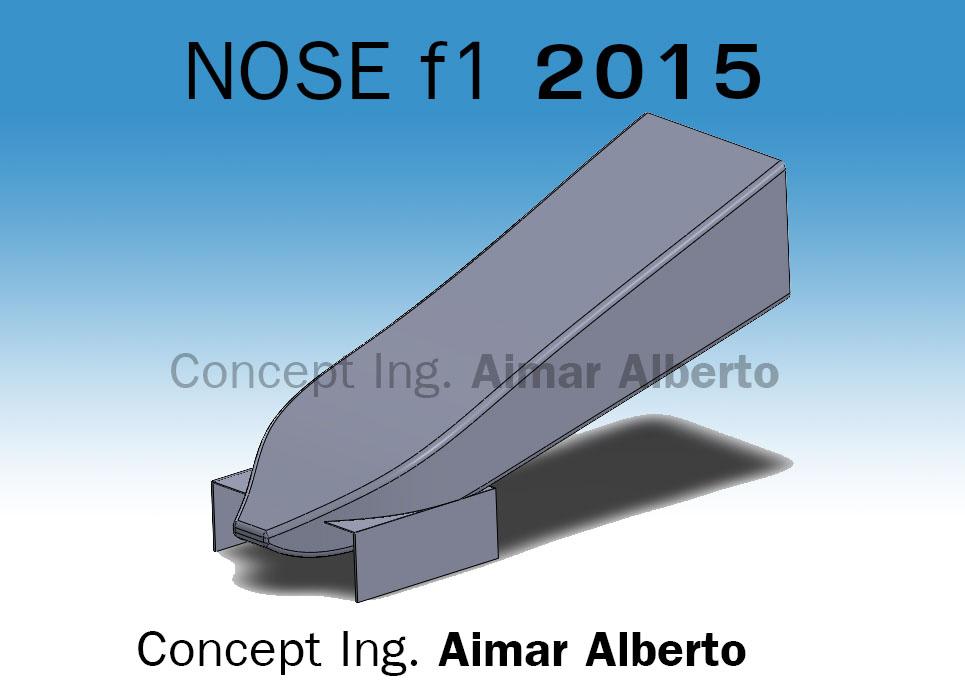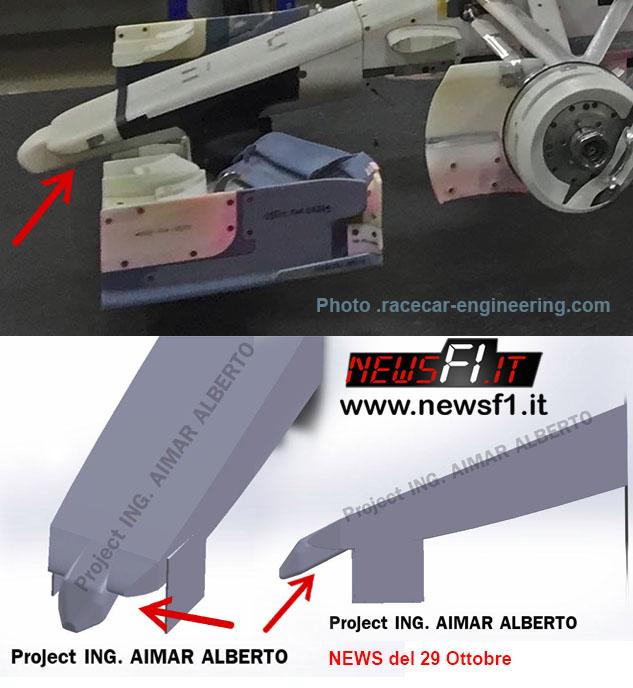New Ferrari f1 2015 ” 666 “
Ferrari 666 F1 2015
After a long time spent resolving some technical matters to be used during the course of the specialist, having carved out a bit ‘of time for some projects of different sectors and after a break just at the end of the season, finally back in the carriage to discuss again of technological aspects and innovations with regard to Formula 1.
What better argument could treat, just in time for parties and especially with the scent of new year, the solutions that we will see in the cars of 2015.
Particularly so, even if the speech will be addressed at a general level, for all cars present on the grid, I want to impress attention to the Mclaren and Ferrari.
These two teams are both living in very intense moments and different from other manufacturers.
The first can finally enjoy the best driver on the track, while the second will face his first championship without the same, and will have to roll up their sleeves … and how if it will have to do.
Let’s start with a series of assumptions with regards to the points of greatest concentration of development planned for 2015: just two words:
Engines and Noses.
In general it will be a year not as expensive as the one just ended, but with difference in what propelled the Mercedes, competition will certainly run for cover on the drive train and will not be easy. Great attention will be placed in such a place by taking most of the resources and time.
Basically it can also be said that the regulation as regards the exterior of the car have not been changed so much higher if not for the frontal crash structure.
Our starting point of the discussion derives from this last aspect: the aerodynamics.
It was created long ago an article very full-bodied on hypothetical forms that could take on the noses of the cars in 2015, of which I post some stretches to help you remember and to take up the subject if there were any new readers:
RECAP OF FIRST ARTICLE
Read full
Let’s start first of all with the photographs of the new profile that the FIA has studied inserting in modified regulation measures.
The photo preview was what you can see here.
NB: I post below also a new photo of the same profile, based on the usual theory of translating literally what he asks the FIA, with somewhat changed according to aerodynamic and structural requirements. A sort of evolution.
In practice, in photos I see the first profile types that you can study and you could see next year.
In practice, in photos I see the first profile types that you can study and you could see next year.
From the previous insert, we can draw a number of ideas to understand already what will be more difficult to fit a profile like the one that characterizes Mclaren for example, Toro Rosso, Sauber and Force India: the typical nose of 2014.
The only section b, of 20000mm ^ 2 prevents the creation of a profile effective and capable of conveying still plenty of air to the lower part of the car, while in 2014, the absence of this limit could afford to play more with this effect. The second effect which limits the insertion of a profile of this type is the proximity between the section B by 20000mm ^ 2 and the ends of the crash structure.
Moreover, the FIA wanted just that, because if it is true that the publicity of the sport enjoys also the beauty of the cars, it was unthinkable to limit the aerodynamic efficiency to make it impossible to insert ugly forms such as those seen in this league .. in part I might as well be in agreement.
The final result is:
END OF RECAP.
Regarding what is written in the first chapter on the cars in 2015, I want to bring two photos that can summarize what has been said and to test the validity of our studies in this regard:
The first illustration resumes the tests carried out by Lotus in Austin, while the second shows the new Marussia format in the wind tunnel.
These will be the forms with greater possibility of appearance on the grids of 2015, but how could they go to influence the rest of the project of a hypothetical formula 1 car?
Let’s try from this simple question to be able to create our hypothetical prototype, ready to compete in the next season.
First, carry a small concept to clarify the ideas on how to behave around a fluid to a surface.
You know that when the current undisturbed air encounters an obstacle, it deforms its trajectory which is no accident, but by following precise directions, depending on two aspects: the inclination angle of the surface with respect to air, and the side from which it is tilted .
These two factors are expressed from a single element called the unit vector normal to the surface. This object is an arrow that is perpendicular to the surface and exits from it.
Each small point of the bodywork of a car, as any other means which moves in the air, has its normal unit vector that expresses the local direction in which the trajectory of the current is changed, in that point.
You should know that when the surface is inclined so as to generate a ramp for the flow that meets, and in order to create an obstacle, the current must restrain precisely because this normal unit vector pointing to the side from which the force that the ‘object generates on the air.
This example is shown in the previous image: the surface generates a unit vector that has a direction contrary to the current that meets it.
This creates what is called pressure gradient, and which is indicated with dP / dx. This front indicates the pressure variation of the flow around the profile to the flow of the space x. As said this pressure gradient derives from the forms of the object and the local unit vectors that the flow encounters.
Is as if the opposite case is that in which the unit vector to get a favorable compared to the flowing air.
In this case to work around the body, the flow is a unit vector that contributes to its acceleration for a complete winding of the same, so we can say that it accelerates.
To conclude this series of concepts I want to bring me back to a law that in the last year we’ve covered a lot: the Bernoulli law.
This law expresses the fact that when a stream is accelerated, it is possible to think of its molecules as further apart, and therefore it is possible to think that the pressure is reduced in quantity in a sense proportional (up to some point) increase speed.
If the flow speed increases, therefore, the pressure of the same decreases and vice versa.
This is for example the case of any inclined plate within a current, if you think about:
At this point we return to the case of formula 1 and try to bring these results on the front profiles of the cars, distinguishing the case where there is the “nose” and the case will not be used.
The results, just by applying these basic notions of aerodynamics, lead to increased pressure in the lower part while a decrease of the same will be visible on the upper side.
This phenomenon is responsible for an easing of the front wheels, but ….
anteriori, ma….
We can see that when you insert the nose, the flow that circulates around does not undergo such high pressure gradients, causing a vertical drop and a deformation from the surface to a less insistent flow.
The colored part of the blue on the underside of the profile, is in fact to indicate a lower flow pressure (red indicates the maximum pressure).
In this regard, we think that the profile projection is the solution in some ways better, and we think that it is this kind of solution has pushed some teams in 2014 to adopt such a ploy.
Written By
AIMARALBERTO.WIX.COM/AEROSPACE-WORLD
Translation by Christopher M. Uhl – Twitter








Pingback: Formula 1 2015 New Theory McLaren Nose | Notizie formula 1 news f1 dirette gp live